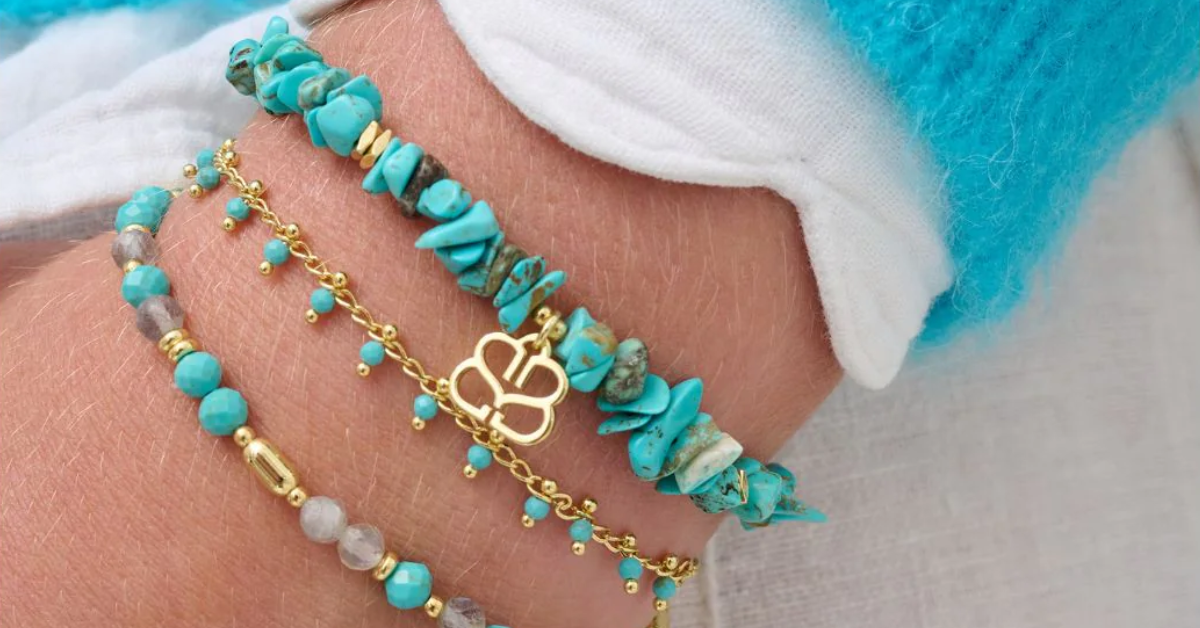You’ve picked the perfect bracelet—elegant, eye-catching, and meaningful. But then comes the question many quietly wonder: Which wrist should a woman wear a bracelet on?
It may seem like a simple choice, but the wrist you wear your bracelet on can be shaped by fashion, tradition, culture, and personal meaning.
In this blog, you’ll discover the origins of bracelets, their significance across cultures, how to decide which wrist suits you best, and the deeper meaning behind this timeless accessory.
Where Did Bracelets Come From?
Bracelets date back thousands of years. Archaeologists have found evidence of bracelets in Ancient Egypt, Mesopotamia, and China, often made from bone, wood, or copper. In these societies, bracelets were worn not just as fashion, but as symbols of power, wealth, protection, and spiritual belief.
The word “bracelet” comes from the Greek brachile, meaning "of the arm". Over time, they evolved from spiritual objects to global fashion staples.
Cultural Significance of Bracelets
Across cultures, bracelets for women carry rich meaning:
-
India: Women wear bangles, which often signify marriage, prosperity, and cultural pride.
-
Africa: Bracelets crafted from beads and metals can mark rites of passage, status, or spiritual protection.
-
China: Jade bracelets are given to symbolise health, purity, and family blessing.
-
Middle East: Gold bracelets are passed through generations and worn at weddings as signs of prosperity.
So, when asking “what wrist should a woman wear a bracelet on?”, the answer may depend not just on fashion, but on deeply rooted traditions.
Who Should Wear Bracelets?
Anyone can wear bracelets, but for women, bracelets often become part of a personal identity. Whether it’s a delicate gold chain, a gemstone bangle, or a leather wrap bracelet, what you wear on your wrist says something about you.
Women may wear bracelets to:
-
Express style
-
Honour culture or faith
-
Mark a relationship or memory
-
Celebrate a personal milestone
-
Enhance an outfit
There are no age or style restrictions. From young girls to mature women, bracelets are for anyone who wants their wrist to tell a story.
What Wrist Do You Wear Bracelets On?
The General Rule
Traditionally, the non-dominant hand is the preferred wrist for wearing a bracelet. So, if you are right-handed, you would wear it on your left wrist, and vice versa.
Why? Because it’s more practical—you avoid scratches and allow the bracelet to stand out more visually when you're writing or gesturing with your dominant hand.
Does It Have To Be That Way?
Absolutely not. Many women prefer their dominant hand for emphasis or simply because it feels more natural.
Fashion stylists now say that how you stack your jewellery matters more than which wrist you choose. The choice comes down to balance, comfort, and your outfit.
What Wrist Do Women Commonly Wear Bracelets On?
In fashion circles, there’s no hard rule, but observationally:
-
Women often wear watches on their left wrist
-
Bracelets are sometimes worn on the right wrist to balance the watch
-
For special occasions, a bracelet may be worn on the more visible hand (e.g., when walking on someone’s arm)
The most important thing? Wear your bracelet where it feels most natural and visible in the way you want it to be seen.
Fashion Trends in Bracelets
Modern bracelet trends are more personal and experimental than ever:
-
Stacking: Layering multiple thin bracelets for a chic, textured look
-
Minimalism: A single delicate gold or silver chain for subtle elegance
-
Statement pieces: Bold bangles or cuffs that stand alone
-
Mixed materials: Pairing leather with gold or pearls with chain links
Fashion has moved past rigid rules. Now it’s about wearing bracelets in ways that match your mood, outfit, or identity—on whichever wrist you like.
Historical Background of Bracelets
Throughout history, bracelets have played many roles:
-
In Ancient Rome, bracelets were status symbols worn by noblewomen
-
In Greece, they were seen in mythological stories and worn by warriors for strength
-
In Medieval Europe, women wore charm bracelets believed to ward off evil
-
In the 20th century, friendship bracelets and wristbands became symbols of youth culture and social causes
Knowing this history adds depth to your decision of where and how you wear your bracelet—it’s not just a piece of jewellery, it’s a continuation of tradition.
Conclusion
So, what wrist should a woman wear a bracelet on? The answer isn’t fixed.
It can depend on:
-
Your dominant hand
-
Your cultural background
-
The statement you want to make
-
Your personal comfort and style
There is no wrong answer—only what feels right for you. What matters most is that your bracelet reflects who you are, carries your story, and makes you feel confident every time you wear it.
FAQs
Should bracelets be worn on the left or right wrist?
Traditionally, they’re worn on the non-dominant hand to avoid damage, but there’s no strict rule. Wear them where they look and feel best.
Can I wear bracelets and a watch on the same wrist?
Yes. This is a growing trend. Make sure the designs complement each other and don’t cause discomfort.
Do bracelets have cultural meaning for women?
Yes. In many cultures, bracelets symbolise marriage, prosperity, faith, or protection.
Is it fashionable to wear bracelets today?
Absolutely. From high fashion to everyday style, bracelets remain timeless and trendy across all age groups.
Can I wear multiple bracelets at once?
Yes. Stacking bracelets is a popular style. Mix textures, metals, and sizes for a personalised look.
